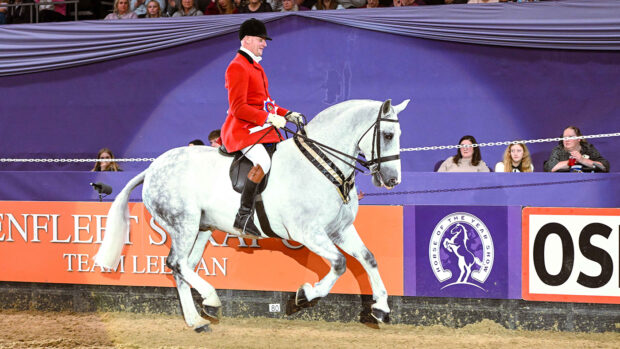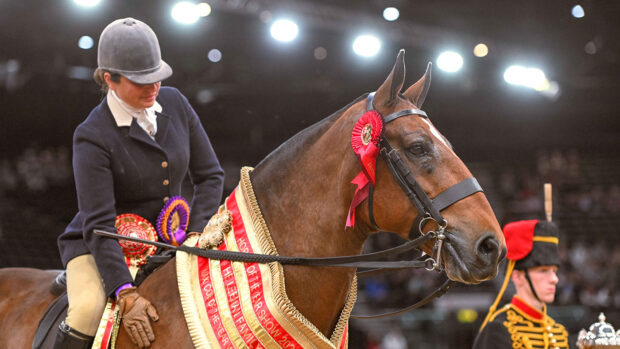Want to show your cob, but not sure how to turn him out for the ring? Learn the ropes from top show horse producer and cob specialist Simon Reynolds, who provides his expert advice and explains how to get the edge in these popular classes…
1. Trimming and hogging
As the lack of mane and hair around the feet is one of the most noticeable characteristics of a hogged cob, the ‘hogging’ is probably the most important part of the turnout process.
Simon always uses graded clipper blades when trimming the legs.
“This means you can avoid the ‘scalped’ look,” says Simon. “Make sure the legs are trimmed neatly around the bulb of the heel and down the back of the leg. My pet hate is to see ‘steps’ in the hair of badly trimmed legs.
“When hogging the mane, use big clippers. It is good to do this a few days before the competition so it doesn’t look too raw. It is frowned upon to leave too much mane growth. You see some people doing this to give the illusion of a fuller and creastier neck.
“The ears, muzzle and jowl area should also be neatly trimmed. With anything, practice makes perfect so ensure you have done it in enough time before the show.”
2. General appearance
Simon says: “Although cobs are historically utility animals, a show cob should be well bathed before a show. Like any other show animal, they need to be clean and should have a sharp and smart appearance.”
3. Tack
Simon maintains that the tack for a cob should be traditional:
“Try and find the right weighted bridle to suit the horse’s head. The bridle should have a flat hunter-style noseband. Also note that sometimes an overly thick noseband on a plain head can make the appearance too heavy and clumsy. A double bridle can break up a horse’s head from the side, giving a more quality outlook.
“Also, have a good think about what type of bit is appropriate for your horse. Some judges can frown upon long shanks or Swales.
“A straight cut saddle is preferred as it shows off the shoulder. Some cobs can put a lot of weight on naturally over the shoulders, giving a blobby appearance so a well-fitted saddle which shows off the front is important.”
Continued below…
4. Finishing touches
Simon adds: “You should use minimal makeup on your cob and just add a slick of baby oil around the muzzle before the class; it’s all that’s required (although this should be avoided on a hot day as it can cause the skin to burn).
“Simple quarter marks can be applied to enhance the quarters. Use those similar to those used on a show hunter. I also like to see the feet well oiled.”
5. Weight
Simon also says that competitors should avoid overfeeding a cob:
He says: “Don’t be tempted to overload a cob with too much weight. If the horse is the correct type it shouldn’t need to be manufactured with artificial weight.
“There’s an old saying that a cob should have the head of a lady and the back end of a cook; it’s a mix of substance and quality. They are still a show animal at the end of the day.”
Don’t miss the latest issue of Horse & Hound magazine for all of the latest news and reports, plus our cob special, celebrating what makes these horses great, out now (23 May 2019)





